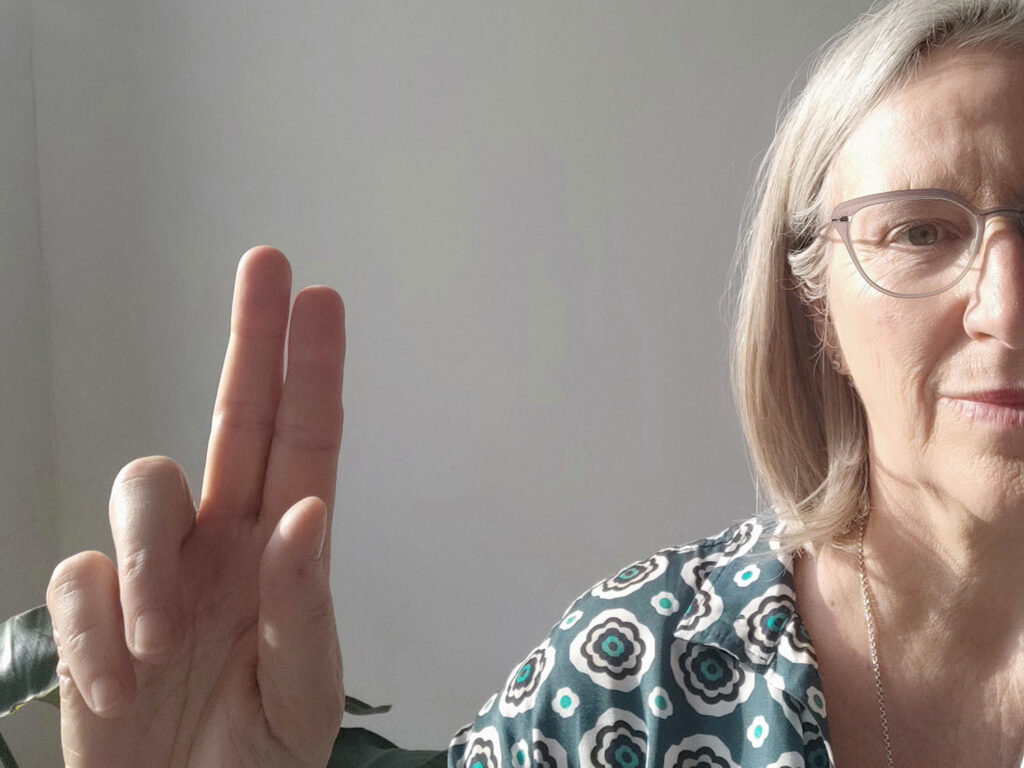WHAT IS EMDR ?
The method
EMDR is one of the treatments I offer in my practice in Ulm – but what is it anyway? EMDR stands for Eye Movement Desensitizationand Reprocessing and was developed in the late 1980s by Dr Francine Shapiro (USA). It is a therapeutic method that is often used to treat post-traumatic stress disorder (PTSD). It is based on the idea that eye movements or bilateral stimulation help to process traumatic memories and reduce their stressful effects. EMDR has been recognized as a scientifically based psychotherapy method in Germany since 2006 and its effectiveness has been proven by neuroscientific studies.
Trauma occurs when we have an extremely stressful or overwhelming experience that we are unable to process adequately. This can be a one-off, dramatic experience, or it can result from repeated, prolonged stress. The experience is considered traumatic if it severely affects our emotional, psychological or physical well-being and we are unable to recover from it. In such cases, the experience often remains anchored in our memories and feelings and can lead to long-term psychological and physical complaints.
The central element of EMDR is the reprocessing of these stressful memories under bilateral stimulation. The client follows the therapist’s finger with their eyes while thinking about a current or past stressful situation, for example. Bilateral stimulation synchronizes the brain hemispheres and achieves an inner reorganization of the dysfunctional trauma experience.
The experience can be processed more deeply, the memories lose their emotional burden and can be placed in a healthier context. As a rule, this quickly leads to an improvement in the symptoms.

HOW DOES A TREATMENT WORK?
After the preliminary discussion, the detailed anamnesis and the definition of the treatment goals, we work out together which topic will be selected for the EMDR session in my practice in Ulm. Each session is clearly structured and follows a fixed treatment protocol.
The core element is bilateral stimulation, also known as reprocessing, which is usually carried out via eye movement. If this is not possible or is not perceived as pleasant, any other bilateral stimulation can also be used (e.g. tactile or auditory: tapping, reciprocal touch or sounds). Clients concentrate on the stressful experience or negative feelings on the one hand and on the bilateral stimulation at the same time. This results in a kind of “decoupling” in the brain and ensures a reorganization. This enables deeper processing of the issues and reduces the stressful elements.
During the sessions, sufficient time is planned for the client’s regulation and stabilization to ensure that the process is gentle and resource-oriented. Intensive immersion in traumatic memories is not necessary.
WHEN CAN EMDR HELP?
EMDR has traditionally been used to treat post-traumatic stress disorder (PTSD). However, the method can also be used for many other issues. These include fears and anxiety, persistent feelings of hopelessness and a lack of energy. Grief and loss, self-esteem problems, lack of stress management and much more.
EMDR can be helpful when we are “stuck” in negative feelings and daily life feels heavy and burdened, or when we lack the resilience we need to face the challenges of everyday life.
Bilateral stimulation helps the brain to process negatively stored experiences in such a way that they lose their stressful effect. This can be thought of as reformatting a trauma program on the hard drive in order to achieve better regulation and emotional stability. Many clients experience a rapid improvement in their symptoms after starting therapy, and often just a few sessions are enough to notice significant progress.
Further information and scientific results can be found on the national websites at the bottom of this page.
DURATION & PRICES
20-minute
info call
Online/telephone - free of charge
Adults &
Young people
60-90 minutes: 95 Euro
from 5 sessions: 85 Euro / session
Are you interested in EMDR in my practice in Ulm? Then I look forward to hearing from you – or you can book directly via my online booking tool!
